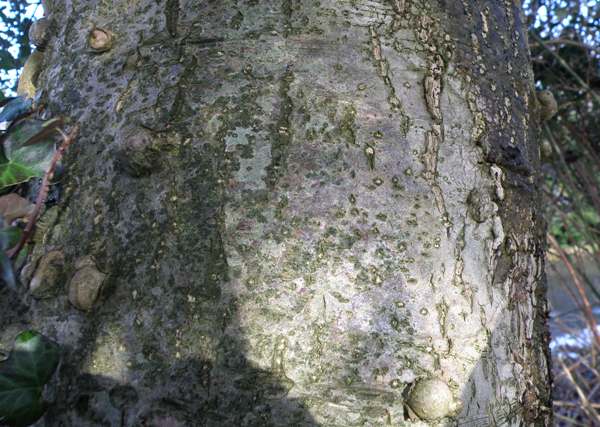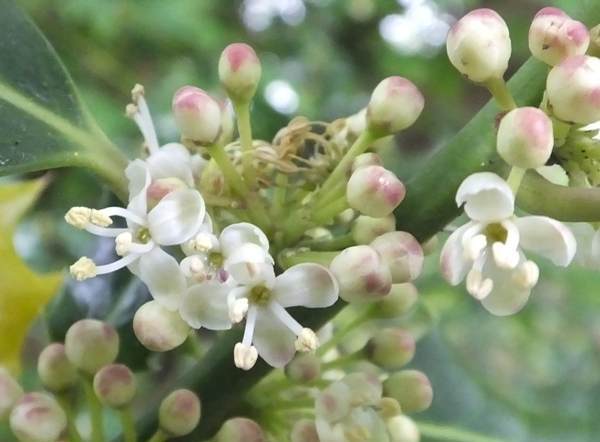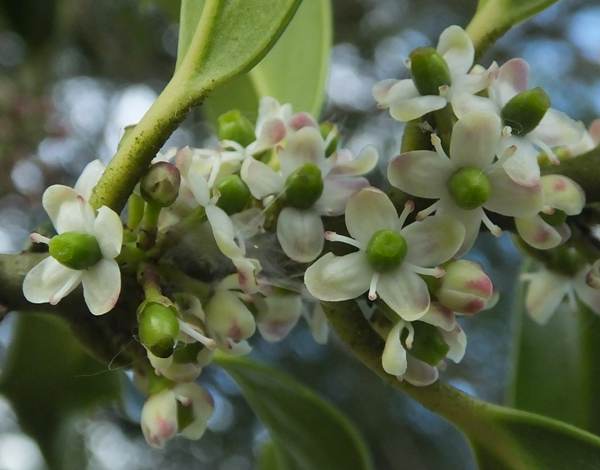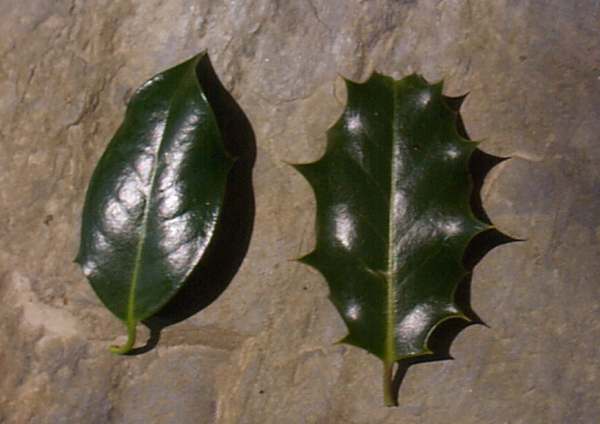Trees Birds Mammals Fish Amphibians Reptiles
Wild Algarve
Bookshop
Ilex aquifolium - Holly
Phylum: Magnoliophyta - Class: Magnoliopsida - Order: Aquifoliales - Family: Aquifoliaceae

Usually less than ten metres tall, and rarely more than 20 metres, the
holly is a native of Britain and very common in Wales, where it grows in
hedgerows and on the edge of woodland.
Tough prickly leaves on the lower branches of Holly deter many creatures that might otherwise steal birds' eggs from nests among its branches. The upper leaves are less well armoured, sometimes having no spines at all. Few plants or fungi can live among fallen
Holly leaves which, like other evergreens, contain strong toxins and are very slow to rot, thus providing a poor growing medium for litter-recycling fungi.

Bark

Above: Male flowers

Above: Female flowers

Upper (left) and lower (right) leaves

Holly berries in winter
In common with the great majority of broadleaf evergreens, the bark of a Holly tree is tough and much smoother than that of oaks and most other deciduous broadleaf trees.
Holly is dioecious, meaning that its male and female plants occur on separate trees.
The red berries of holly add a splash of colour at
Christmastime, when this evergreen tree is often at its most attractive.
Many other evergreens can create mycological deserts. (Of course, any associated AM fungi will still be active in the underworld.) Like Holly, Box, Buxus sempervirens, and Privet, Ligustrum ovalifolium, can suffer from leaf fungal attacks such as Tar Spot, but waste no time searching for mycorrhizal fungi beneath their shelter. Unlike Holly, however, these popular hedging evergreens can and sometimes do fall victim to attack by Honey Fungus.
Honey Fungus, Armillaria mellea, is the gardener’s nightmare. Its black bootlace-like rhizomorphs travel through soil and leaf litter in search of new victims, which can even include such tough evergreens as Box and Privet. Holly, in common with the coniferous evergreen Yew, is resistant to Honey Fungus.